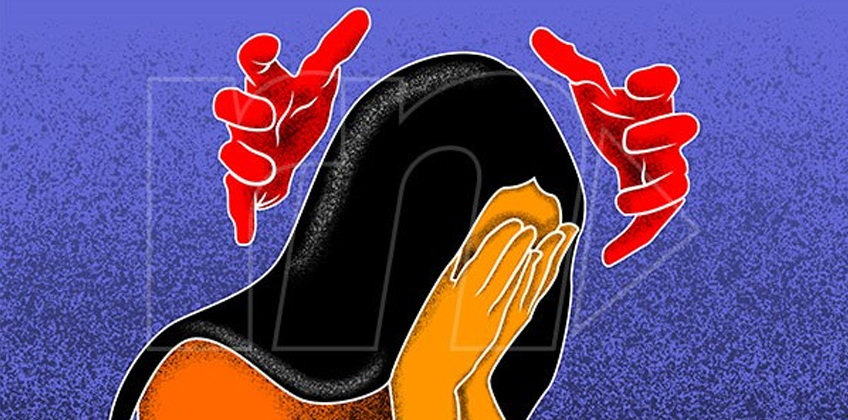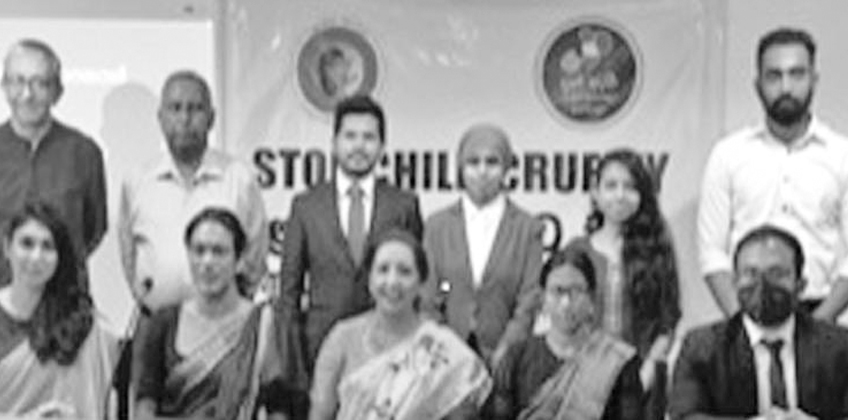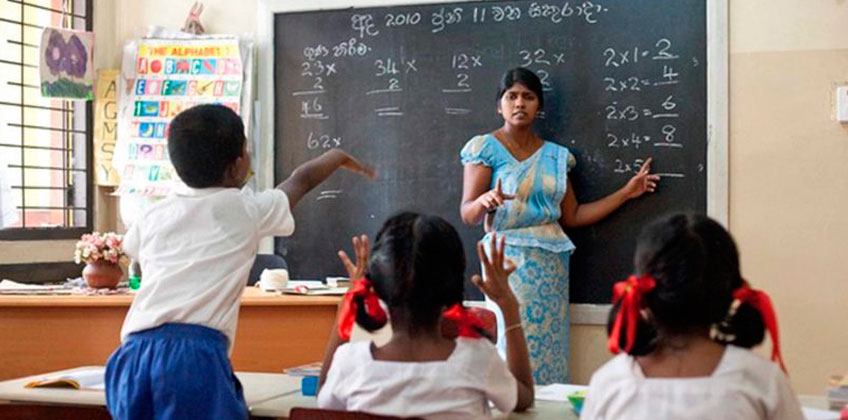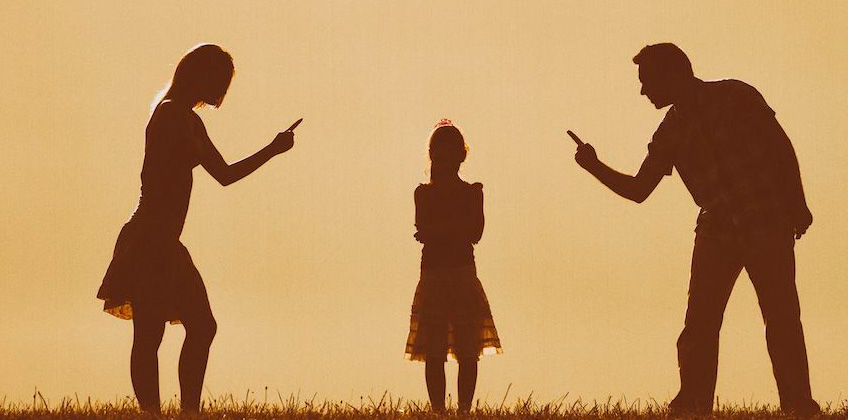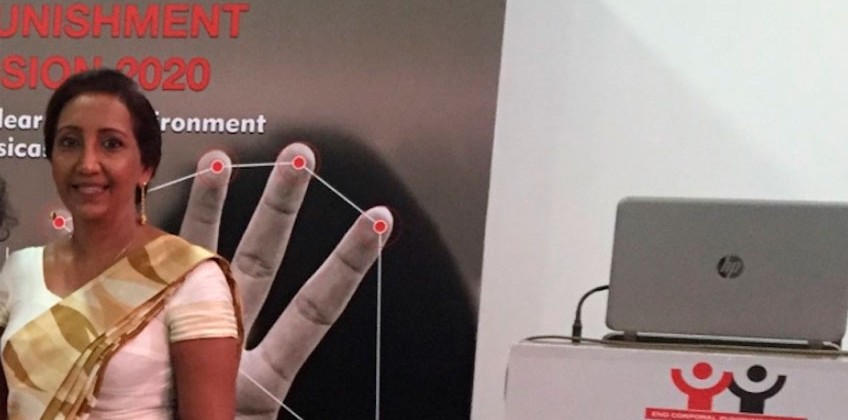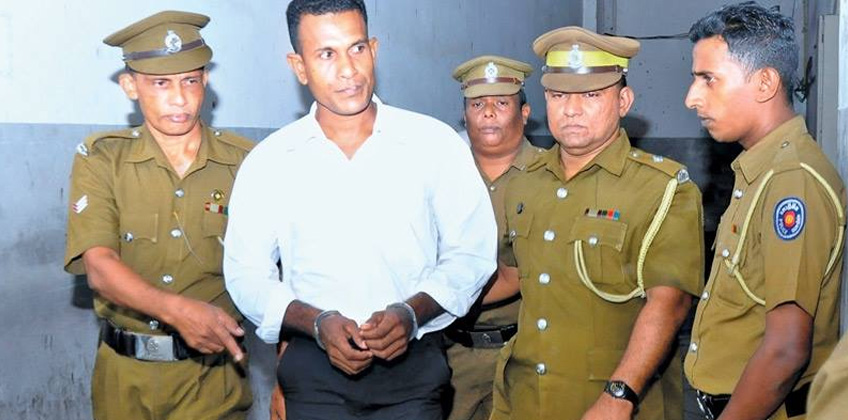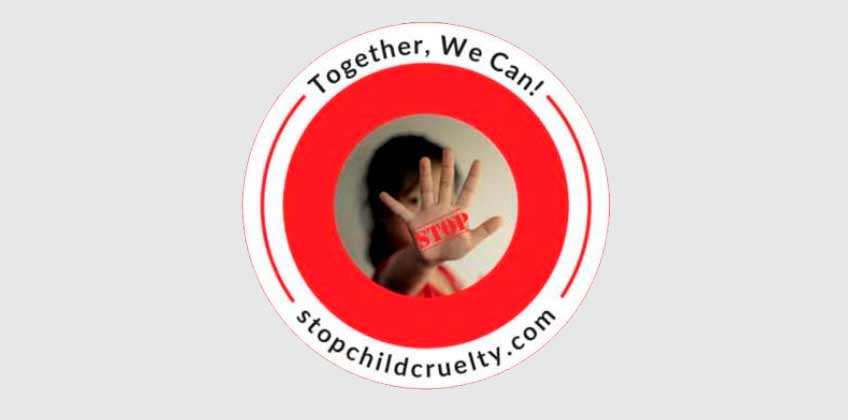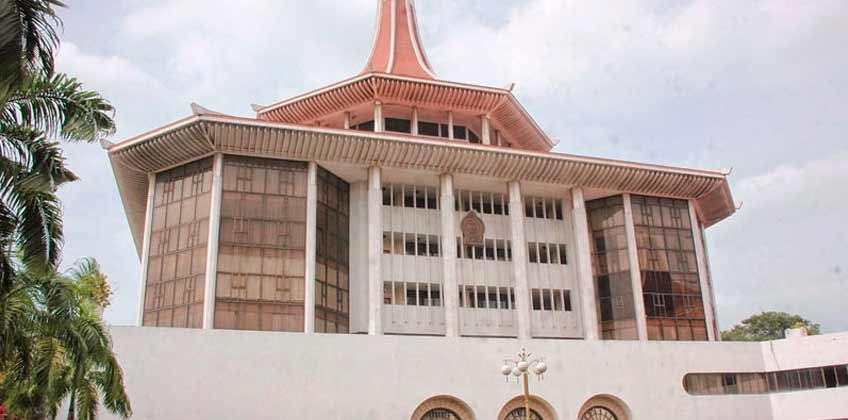
By Grusha Andrews –
My father gave me the one and only ‘tokka’ of my life when I was twelve. It was semi hard and unpracticed- a bad ‘tokka’ by any definition. It was the first time I have seen him raise his hand to anyone. As I jerked my head in utter surprise he almost missed his aim. That shape shifting in that split second broke an unspoken pact. He never referred to it and neither have I. Today I can tell, with my hand on my heart that he never raised his hand to me again. Neither has any other man, woman or teacher raised their hand to me. And I can also say, with the same hand on that same heart that I have never, ever, hit my children. When they came from my body to this world, we entered in to an unspoken covenant. If I hit my child, small, vulnerable, trusting, and innocent, I will be breaking it.
So my questions to you are: were you ever beaten up as a child-with hands, feet, canes, belts, spoons, barks, rods etc.? Have you beaten up your children or students? The man who beat you up, did he beat his woman? The woman who beat you up – was she beaten by her man?
Can you place your hand on your heart and say that you were neither abused, nor are you an abuser?
Trivialized Scourge
The First Citizen of our country Maithripala Sirisena self-elevated himself to the position of First Child Abuser of the nation in his latest round of mini-political hara-kiri recently. At a public gathering he proudly proclaimed that he is what he is today because of the beatings he received, further elaborating that “he can still feel the sting”. He continued his self-immolation, mocking the anti-corporal punishment movement in Sri Lanka calling it an “NGO that burns canes”.
Child abuse is Sri Lanka is perhaps its ugliest can of worms, too complicated to open, too disgusting to process. It ranges from culturally sanctioned corporal punishment to religiously sanctioned sexual abuse of children within the closed doors of temples, churches, kovils, mosques and ‘madrasas’. It’s sickeningly panoramic story extends from child marriages, psychological abuse, neglect, physical torture to incest and teenage pregnancy. Corporal punishment remains the most culturally accepted, politically sanctioned, anecdotally trivialized and jocularized scourge of our nation.
Many pathetic adults who have ‘never really left school’ living well in to the adulthood of their 50s nostalgically recall and romanticize the corporal punishment they received at school. They trivialize the pain, terror and the suffering and moronically proclaim that “we are what we are today because our teachers beat us up to bring us to the correct path”.
The First Child Abuser Of Our Nation
The first person that came to my mind when I thought about this issue was Vidyajothi Prof Harendra De Silva, renowned paediatrician and probably the most pivotal professional in the anti-child abuse discourse of Sri Lanka. He is perhaps the biggest unsung hero of how far we have come in this sphere against the tide of tradition and culture that deviates from every charter of human rights and child rights; every norm of human decency; every word of compassion and love preached in all religions.
The second person who came to my mind is also a doctor, although a minion compared to Prof. De Silva. She is Dr Tush Wickramanayaka, noted anti-corporal punishment activist, a new entrant to the arena. Wickranmanayaka, the daughter of a former Prime Minister of Sri Lanka, Ratnasiri Wickramanayaka intrigues me with her indomitability. She fights hard every day to get justice for her children who have been direct and indirect victims of corporal punishment at a reputed international school. Her fight has metamorphosed in to a fight for all children, and, in the open society of the internet she gets a lot of visibility. Her apparent privilege pales in the networked and potent backdrop of politically, culturally and traditionally sanctioned culture of corporal punishment.
I contacted Wickramanayaka through Colombo Telegraph and asked her for her views about the First Citizen turned First Child Abuser of our republic. She said: “when the Head of State who deliberately violates the constitution just five months ago, gears up to dirty politics by playing into the gallery of voting teachers and ignores the rights of his young non-voting citizens, we can be assured of two things. Either he is suffering from amnesia or he is suffering from mental illness. Either way, being subjected to severe corporal punishment as a child, his pain still raw after all these years, highlights the following negative text book characteristics of a victim of physical abuse: short term memory loss, pathological lying delusions of grandeur, inter-generational transformation of violence, lack of respect to common law, bullying and intimidation and finally, the victim becomes the aggressor. In his case this is a President who wishes to introduce capital punishment to his citizens”.
The First Joker Our Nation
Apparent by the damning election results of the local government elections of 2018, Sirisena must be hated by the corporal punishment glorifiers as well as its opponents with equal zeal. The fun fact is that corporal punishment glorifiers probably don’t realize that Sirisena’s despicable qualities as a President, citizen and a man can be strongly attributed to his history of being a victim of corporal punishment.
Following the imbecilic comment of the President, sarcastic posts in social media ran amok, throwing Sirisena’s words back at him. Overnight he became the poster boy for “the best reason for shunning corporal punishment” because “it gives rise to losers like Sirisena”. However, the mirth apart, Sirisena’s ignorance on basic human rights and child rights is concerning.
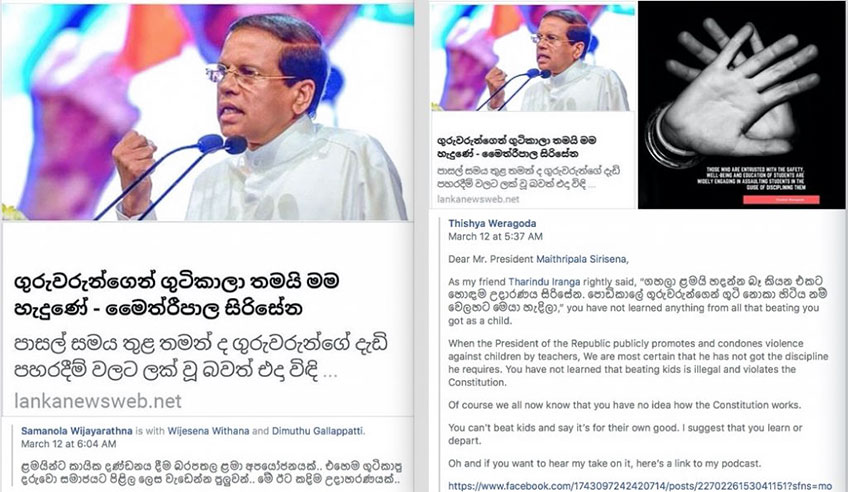
No Vote- No protection
A man of Sirisena’s limited intellectual capacity probably cannot fathom the scientific basis for shunning corporal punishment. Shameless men such as he, only see how many votes are at stake. In an interview with the BBC, Prof Harendra De Silva stated “it is the children who are beaten. Children don’t have a vote. It is the adults who beat. Adults have the vote”.
Prof. De Silva’s damning words summarize the pitiless despicability of our political leaders who are only able to see issues if it would bag them a few votes. The JVP too is also not free from blame. In the recent incident of a teacher sentenced to two years of imprisonment for causing grievous bodily harm to a student, the JVP shamelessly led the pro-corporal punishment movement of the uneducable teachers unions who took to the streets.
History Of Corporal Punishment In Sri Lanka
As with many other procedures, the British who formalized corporal punishment in schools laid down specific guidelines for this at the time it was a legally and culturally accepted method of discipline. Speaking to several “old school” retired school principals well in their 80s I found out that the following guidelines that were in place in Sri Lanka when corporal punishment was practiced legally:
1. Caning was the method of delivery of corporal punishment.
2. Hitting with hands, feet, belts, barks, rods etc. was not a legal methods of corporal punishment. This ensured the standardization of the instrument and force used in punishment.
3. Caning would be done by a teacher in front of the school principal or an authority higher than the caner. Alternatively the principal may be the caner. This ensured that the caning did not escalate in to further physical abuse.
4. A log entry would be made with name of student, date, offense, caner and number of strikes delivered. This ensured a reference point to the caning if complications arose.
5. No female student would caned by a male caner. A female teacher or appointee would cane a female student in front of the principal or due authority. This prevented disproportionate force applied on a female by a male who was physically stronger. It also probably discouraged the notion of “’men hitting women”.
6. The palm was the only anatomical part that could be caned. Buttocks, thighs, head, upper or lower body were not legal anatomical parts that could be caned.
7. The student should stand at an arms distance from the caner and stretch the hand forward offering the palm to be caned.
8. The caner would hold the cane with the hand and the caner’s arm would be parallel to the ground at all times. This controlled the force of the strike.
9. The caning will be done by striking the palm of the student without raising the arm at the shoulder or the elbow. Only the flexing of the wrist and striking with the strength of the caner’s wrist was allowed. This also controlled the strength of the strike minimizing physical harm.
10. A student would not be caned in a manner causing bruising, wounding or further physical injury.
Elaborating the historical guidelines for caning above is by no means a justification of the corporal punishment even in a controlled form. What I wish to highlight is that even historically, the concept of corporal punishment was not a method of discipline introduced to vent the psychological, social, personal and sexual frustrations of the teachers or parents on a defenseless child.
Even in the era where this was an acceptable mode of punishment, it was premeditated in delivery. Caning was preceded by taking the student to the principal’s room, discussing the offense, making the student realize/accept his wrong doing and delivering a minimum force punishment under supervision. Perhaps the shame and the entire process of being “taken to the principal’s office” was a bigger punishment to the student than the caning per se.
The Unfinished Journey Of Corporal Punishment Free Sri Lanka
In this book “Child Abuse A Global View – Sri Lanka”, Prof Harendra de Silva writes: “the Education Ordinance of 1939 of Ceylon (Regulations for the Instruction and Guidance of Teachers in Government Schools, 1939) is still in effect and permits caning a child, even though Sri Lanka is a signatory to the UN Convention on the Rights of the Child (CRC), which requires signatories to the convention “to take all measures to ensure that school discipline is administered in a manner consistent with the child’s human dignity and in conformity with the provisions of the Convention” (United Nations Convention on the Rights of the Child, 1989, Article 28 [2 ]). Although the 1939 Education Ordinance allows a principal to give a child a maximum of four “cuts,” this limitation is rarely observed in practice. Further, doctors often do not consider a child’s injuries caused by parents or teachers to be child abuse”
How President Chandrika Bandaranaike Kumaratunga and Dr Tara De Mel, primarily inspired by the work of Prof Harendra De Silva initiated a historical journey of changing the above mentioned state to make Sri Lanka corporal punishment free remains largely unknown. In Part 2 of this articles this journey and perspectives of the same will be elaborated.
Different Strokes Of Different Folks
Whatever the shortcomings of President Kumaratunga were, she had the liberalism to view children and their rights from a just perspective. Whatever her bungling failures as a politician were, she was and is a superb mother who raised two awesome children. Throughout their troubled childhood, Yoshodhara and Vimukthi Kumaratunga faced harrowing violence against their parents. However, they remained humble, respectable, decent, were never implicated in a single infamous incident that compromised the stature of their mother’s office. This is probably due to the humane, non-violent and sentient parenting by Kumaratunga as a mother. She had a streak of humanity in her, not tainted by ugly politics that strived to provide equally decent, corporal punishment free environment for our children.
In his backdrop we can reflect on the ridiculousness of an imbecilic President who in his vote hunger is advocating the abuse of our children as the First Child Abuser of Sri Lanka, undoing our efforts at human decency for quarter of a century. While he reigns as a First Child Abuser of the nation, three of his grandchildren are sitting pretty in government schools. Like all innocent children, they too may be up to mischief. Which teacher is raising their hand to beat up this corporal punishment advocating President’s grand children?
This is the question.
When we raise our hand to hit a child, what are we raising it against? A wrong that can very well be settled with counselling, discipline, love and attention or are we raising our hand to the powerlessness, vulnerability and social disadvantage of the child?
Part 2 to be continued….
References:
Child Abuse A Global View – Sri Lanka, D.G.Harendra de Silva. – Eds. Swhartz-Kenny, Mc Caulley & Epstein. Greenwood Press, Westport, USA. ISBN 0-313-30745-8
Acknowledgement
Grusha Andrews offers her profound thanks Prof. Vidyajothy Harendra De Silva for his contribution to Part 1 and Part 2 of this article.
Special thanks to Dr Thush Wickramanayaka for her quote and to Colombo Telegraph for the liaison.


